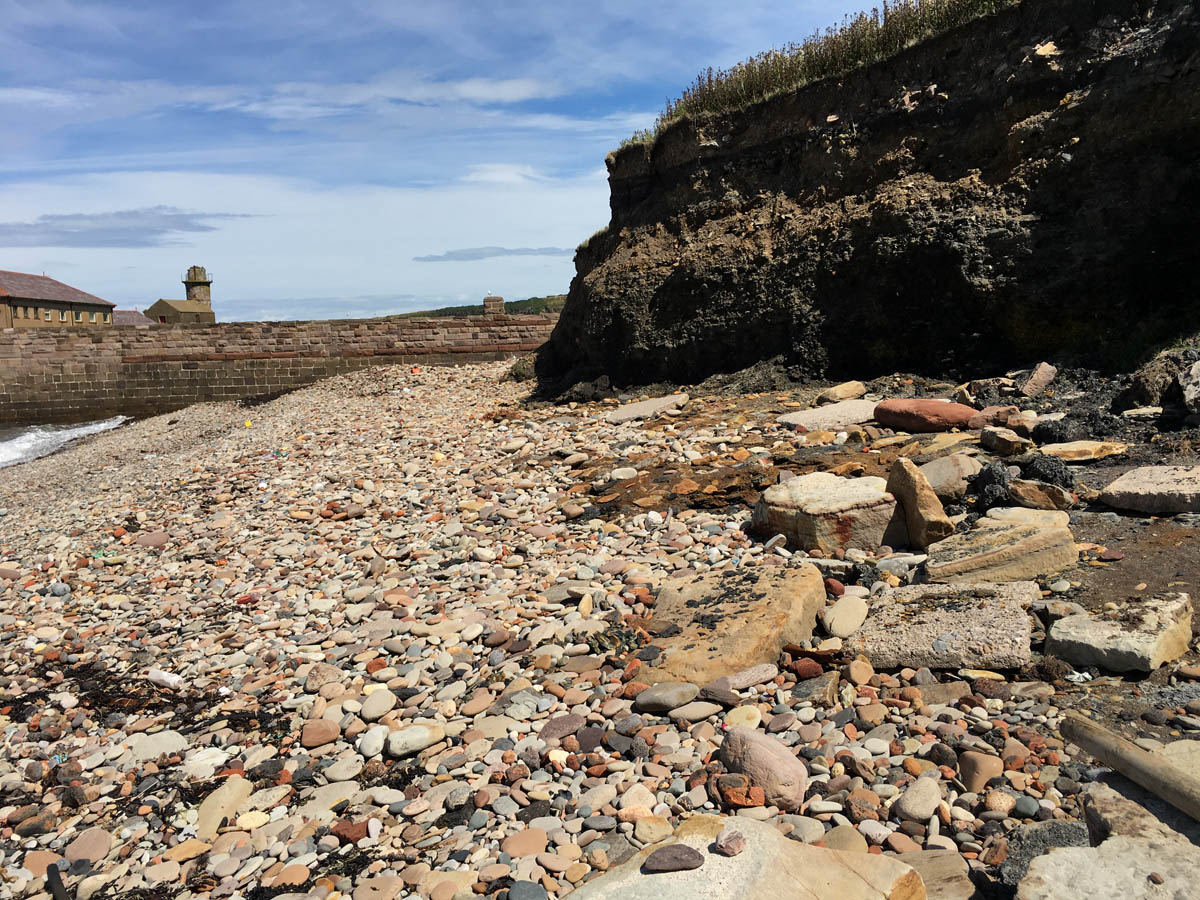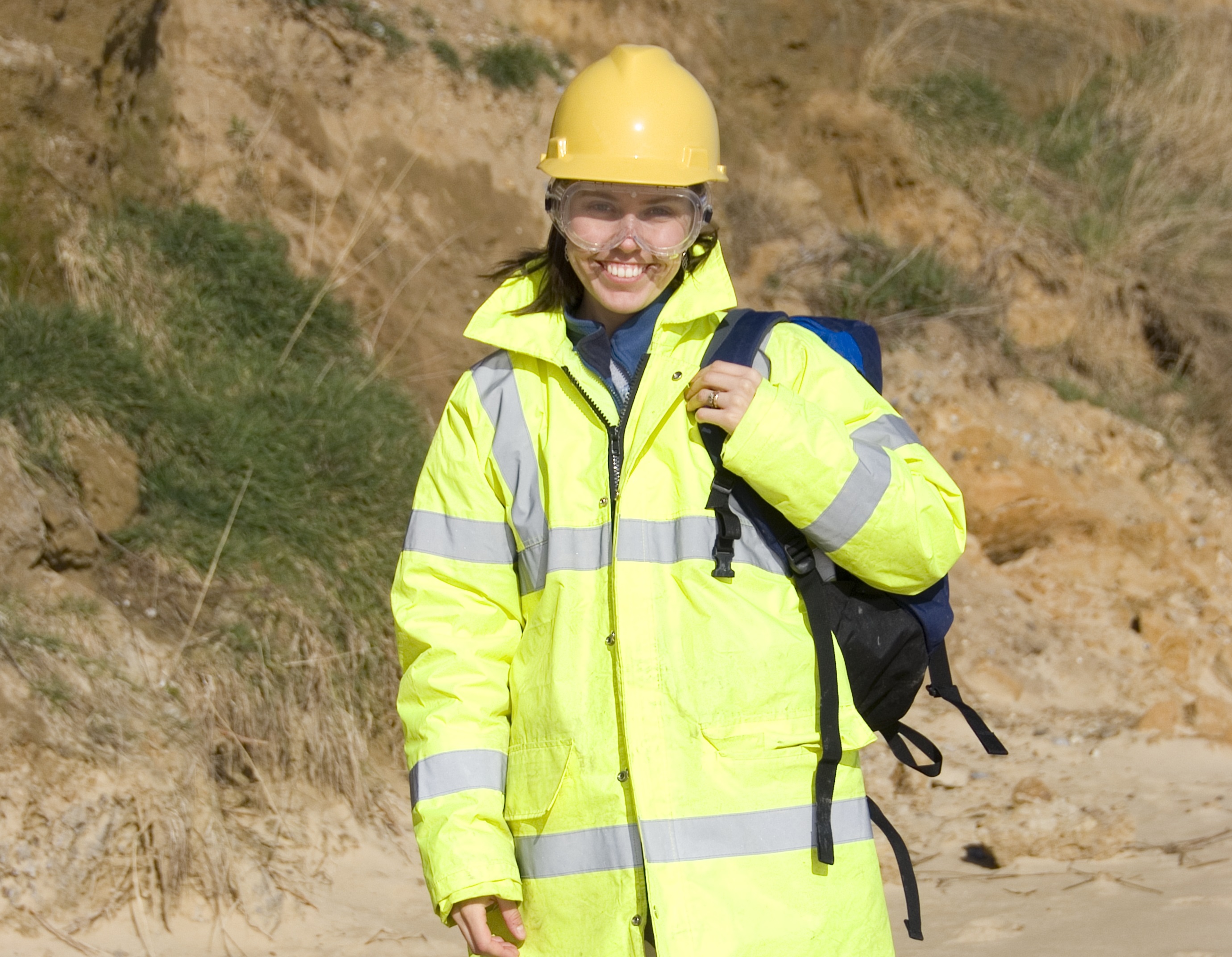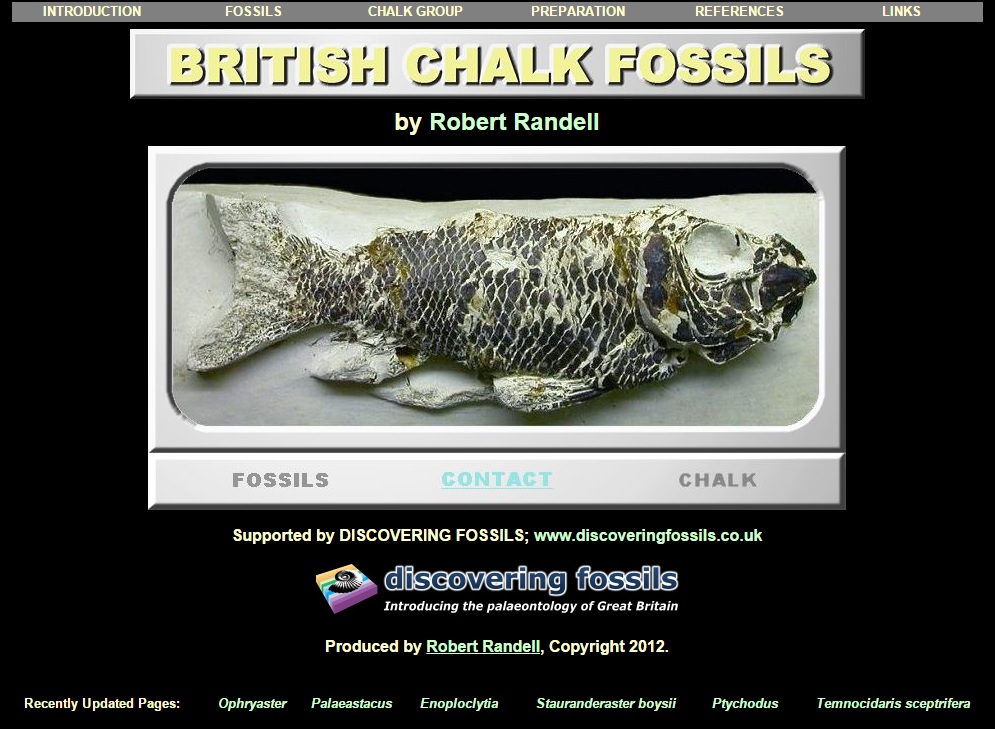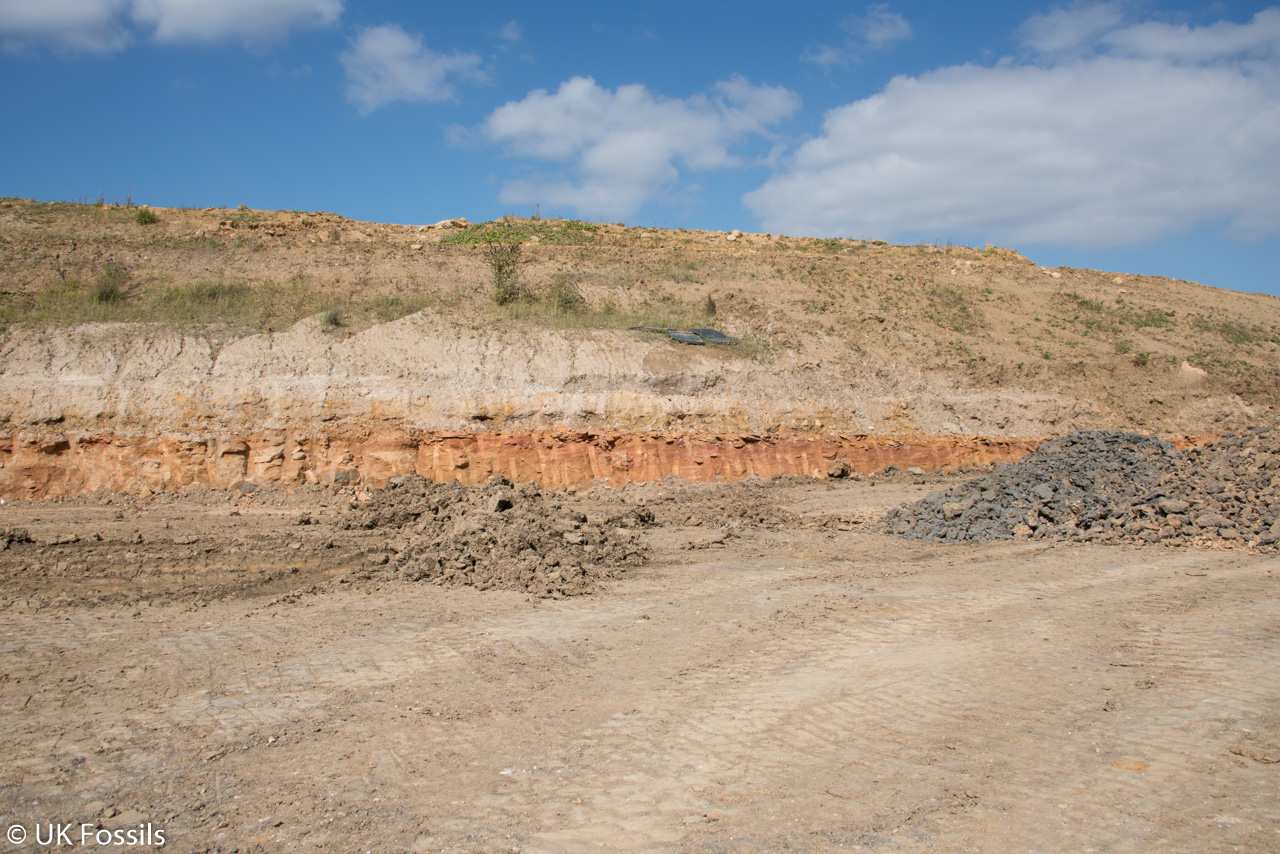Situated just outside Trefil, the highest village in Wales, this is a former limestone quarry, which once supplied the Sirhowy Ironworks and contains the remains of a Carboniferous coral reef.Carboniferous, Disused Quarry, Rating: ♦♦♦


Situated just outside Trefil, the highest village in Wales, this is a former limestone quarry, which once supplied the Sirhowy Ironworks and contains the remains of a Carboniferous coral reef.Carboniferous, Disused Quarry, Rating: ♦♦♦

Just outside of Larne town centre and north of Larne harbour, Co. Antrim is Waterloo Bay, where important exposures of Triassic and Jurassic rocks can be found, specifically the Waterloo Mudstone Formation, part of the Lias Group. Although the Triassic Penarth Group rocks are not particularly fossiliferous, the blue lias yields early Jurassic fossils including ammonites, belemnites and gryphaea. The cliffs and platforms are protected however many washed out loose fossils can be found. Jurassic, Foreshore, Rating: ♦♦♦

To the east of Malahide town centre is a small beach on which it is easy to find loose carboniferous fossils and limestone pebbles containing beautifully preserved crinoids, bryozoans, bivalves, corals and brachiopods. The pebbles are washed out from exposures along the local coastline, including foreshore platforms found between Malahide and nearby Portmarnock.Carboniferous, Foreshore, Rating: ♦♦♦♦♦

North of Portmarnock, on the east coast of Ireland to the east of Dublin, is a short stretch of coastline with abundant exposures of Carboniferous rocks in foreshore platforms, containing beautifully preserved crinoids, bryozoans, bivalves, corals and brachiopods. The cliffs and platforms are protected, but many pebbles are washed out from the exposures along the coastline between Malahide and nearby Portmarnock.Carboniferous, Foreshore, Rating: ♦♦♦♦

Southeast of Waterford and southwest of Wexford is the Hook Head peninsula, which is remarkable for the abundant, beautifully preserved Carboniferous fossils, at its furthest reach by the Hook Lighthouse. The outcrops around Hook Head consist of abundant exposures of Lower Carboniferous rocks in foreshore platforms, containing beautifully preserved crinoids, bryozoans, bivalves, corals and brachiopods. The cliffs and platforms are protected, but many loose fragments can be found containing significant numbers of jumbled fossils of all types, with superbly preserved detail.Carboniferous, Foreshore, Rating: ♦♦♦♦

Ten kilometres northwest of Ballycastle in Co. Antrim is White Park Bay. Successive layers of rock yield Mesozoic fossils including ammonites, belemnites and Gryphaea. However, the cliffs and platforms are protected, but many loose blocks containing fossils and some washed out fossils can be found. The beach is also known as one of the few places in the world to have “singing sand” – when conditions are right, the extremely fine sand vibrates to make a humming noise. The location is also known as a historic manufacturing hub for flint axes and arrow heads, due to the abundance of flint nodules found in the cliffs, with artefacts dating back as far as 8,000 BC. The landscape also features passage tombs looking out over the sea, where, on a clear day, the coast of Scotland can be seen.Cretaceous, Jurassic, Foreshore, Rating: ♦♦♦

This location is highly fossiliferous, with chalk packed with ammonites, echinoids, brachiopods, bivalves and crinoids. This is one of the best chalk locations in the UK and is full of surprises. It is highly recommended to all fossil hunters who love the chalk. Cretaceous, Cliffs and Foreshore, Rating: ♦♦♦♦♦

Saltcom Bay is found to the south of Whitehaven, directly after the harbour. It yields a variety of Carboniferous fossils from a mix of shale and limestone. The cliffs have been formed from spoil dumped from the coal mine and steel works that previously existed in the area, which are now being eroded. The site is rich in plant remains, fish scales and corals. Carboniferous, Cliffs and Foreshore, Rating: ♦♦♦

Parton Bay is just north of Whitehaven and yields a variety of Carboniferous fossils from a mix of shale and limestone. There are no cliffs here, but material has been washed from the south and dumped from the former steel works and the coal mine that supplied it, containing plant remains, fish scales and corals. It is a safe and easy location, and is ideal for children. Carboniferous, Foreshore, Rating: ♦♦♦♦

The entire section of coast along Compton Bay provides a worthwhile day out, with opportunities to find pieces of dinosaur bone (mostly rolled) and possibly teeth; and to see the large number of dinosaur footprints scattered along the coast. This section is famous for the remains and footprints of dinosaurs, for which the Isle of Wight is famous. Both commonly occur on the foreshore. Cretaceous, Cliffs and Foreshore, Rating: ♦♦♦♦♦

The beach at Cogden, near West Bexington, is next to Hive Beach at Burton Bradstock. It is a popular walk for families and dog walkers, with Hive Beach cafe and toilets a short stroll away. At Cogden Beach, the cliffs are made up of the Jurassic Frome Clay and bivalves and brachiopods are the most common fossils. Jurassic, Cliffs and Foreshore, Rating: ♦♦♦

Abbey Wood’s highly fossiliferous shell beds are open to the public for digging, with prior permission. The Eocene beds here are extremely rich in fossil sharks’ teeth, fish, mammal and bird remains, and fossil shells. Fossils are best found by onsite sieving, and is often visited by schools and society organised events. Eocene, Disused Pit, Rating: ♦♦♦♦♦

The small section of Corallian cliff at Pirates cove provides the collector with an abundant and varied fauna of gastropods and bivalves, as well as echinoids. With easy access, provided the tide is favourable, it is an ideal spot for a productive hour or two, not far from other sites. Jurassic, Cliffs and Foreshore, Rating: ♦♦♦

Tidmoor Point is a small promontory of highly productive Oxford Clay, situated along the shoreline of The Fleet lagoon, opposite Chesil Beach. Renowned for its pyrite and limonitic casts of small ammonites, the cliff here is very low. Apart from ammonites, the site is also rich in belemnites, crinoids, crabs, lobsters, sharks, reptiles, crocodiles, fish and molluscs. Jurassic, Cliffs and Foreshore, Rating: ♦♦♦♦

The fields around Ilminster in Somerset are famed for their fossils from the Upper Lias Beacon Limestone Formation (formerly, the so-called ‘Junction Bed’). In particular, ammonites are sought after and, after ploughing, can be found in some numbers at this location, on the surface of the fields. Jurassic, Fields, Rating: ♦♦♦♦♦

Sidmouth is an important Triassic site, where the rare remains of fish, amphibians and reptiles can be found, with easy access down to the shore. Most specimens have been recovered from fallen blocks, but a few have been found in situ. Bones and footprints of the labyrinthodont, Mastodonsaurus lavisi and a rhynchosaur, Fodonyx spenceri, have also been found on the foreshore. Triassic, Cliffs and Foreshore, Rating: ♦♦

On the edge of the Brecon Beacons, Upper Gilwern Hill is a site long known for its well-preserved and complete trilobites. The hill is made up of rocks from the Lower and Middle Ordovician, and the privately owned quarry is accessible to parties staying at the onsite Shepherd’s Hut self catering accommodation. The trilobite fossils here are plentiful and the chances of finding a good number is very high. Ordovician, Private Quarry, Rating: ♦♦♦♦♦

The most common method of how fossils formed is once an animal or plant dies, it falls to the ground, and is covered by sediment. This is often sediments brought from water. Of the vast amount of prehistoric life that died, it is only a tiny amount that has survived the fossilisation process. The conditions when the majority of life died were just not right at that time, to preserve them.

The Magazine on Fossils, Geology & Minerals. Deposits is both a printed and online magazine featuring articles by high profile authors. Deposits is a full colour glossy 52 page high quality earth science magazine. It is […]

This site is dedicated to the fossils of the lower cretaceous Albian (Gault Clay and Folkestone Beds) in the county of Kent, south-east England. In particular the beautifully preserved faunas of the Gault Clay are […]

A comprehensive guide to the Early Eocene, Ypresian fossils of the London clay of the Isle of Sheppey, Kent, UK. The site covers an identification guide, coastal erosion, geology, and even the minerals. It is […]

Fossils can be found in many places, most fossils are found on the beach or in quarries but many have been found in some very unusual places. Below is a list of places that you could find fossils. Please note some places such as quarries and farm fields need permission before you can enter, other places where fossils form part of the construction such as sea defences and walls, should not even be attempted. Damaging other peoples property is not only illegal, but morally wrong.

The word Fossil used to be defined as ‘something dug up’. Now-a-days it generally means ‘The remains or trace evidence of prehistoric life’. The study of fossils is called palaeontology; someone who collects and studies them is called a palaeontologists. Fossils can be as tiny as a grain of pollen or a seed for e.g. or as huge as a limb bone from a giant dinosaur. For animal or plant remains to have become ‘fossilised ‘, they must go through a certain process that preserves them for up to millions of years after they have died. Usually it is only the hard parts of plants and animals that survive this long process.

Seaham is a Carboniferous coal measure spoil heap, which was dumped in front of magnesium limestone cliffs at the old Dawdon Colliery. The reserves are so extensive that they have provided years of interesting collecting from spoil, which is gradually being washed by the sea. The colliery closed in 1991, but the tall cliffs of spoil continue to yield well-preserved plants. Carboniferous, Spoil, Cliffs, Foreshore, Rating: ♦♦♦♦♦

This Web Site displays more than 2,000 of the characteristic fossils of the Eocene and Oligocene deposits of England. It is hoped that this provides a useful resource for those wishing to identify their own […]

There are two classic pits within Sudbourne Park. Both have become very overgrown in recent years, but sections are cleared from time to time to keep these SSSIs accessible and available for further research. Rich shell beds of Coralline Crag yield a variety of fossils, which can be easily collected from when sections are cleared. Pliocene, Spoil Heap and Disused Pit, Rating: ♦♦♦

When fossil collecting, you will need the correct equipment. Often, each location will differ and of course depending on the weather and time of the year, you will also need to consider the correct clothing.If you are collecting in a quarry, there are important health and safety requirements by law. These are that you must wear a hard-hat, high visibility jacket and steel-toe-cap boots. This guide explains the recommended equipment you should take, both for your own safety and also the tools you might need.

Betteshanger (formerly Fowlmead) Coutry Park is a great site for Carboniferous plants, which are abundant and come from Kent’s former Betteshanger Colliery. Fossils are found in spoil, which is maintained by Geoconservation Kent Rigs. This is a perfect site for all the family, which is easy to access. Carboniferous, Spoil, Rating: ♦♦♦♦♦

Abereiddy is the best and easiest place in the UK to find graptolites. It is also an outstanding place where you can see and photograph in situ graptolites, crammed into the sloping bedrocks. Although this site is a SSSI (so hammering the bedrock is strictly prohibited), there is no reason why you would want to disturb the bedrock. The foreshore is full of rocks that can be picked up without tools and contain better specimens than those in the bedrock. Ordovician, Cliffs and Foreshore, Rating: ♦♦♦♦♦

When different types of fossils are talked or written about, they are often given complicated Latin names, such as Dactylioceras commune, Neohibolites minimus and Stigmaria ficoides. These names can sound a bit daunting and you […]

These pages are designed as a general guide for all those interested in the fascinating fossils of the British Chalk. Hopefully this will be a useful resource for academics and students alike, whilst at the […]

Southerndown is a Jurassic coastal location that closely resembles the classic Lias sites of Somerset. The early Blue Lias is mostly thickly bedded limestones, with thin shale bands. The limestones are full of bivalves, with occasional ammonites. They sometimes also yield reptile remains and fish. Jurassic, Cliffs and Foreshore, Rating: ♦♦♦♦

Houghton Quarry is an abandoned quarry, formerly used to extract chalk for a cement works onsite (which is no longer there). Quarrying stopped about 40 years ago, but, due to its size and terracing, only parts are overgrown, leaving an enormous amount of clean chalk. A large amount of this consists of boulders of various sizes on the quarry floor, yielding many good fossils. Collecting is not allowed here. Cretaceous, Disused Quarry, Rating: ♦♦♦♦

This site is a disused railway cutting near Tilton-on-the-Hill, which is extremely rich in fossils. Now fairly overgrown, there is just one small area of collecting where the cliffs are still accessible. The site is a SSSI, for the diversity of its fossils, its geological important and for the living fauna and flora that can be seen here. It is also a nature reserve. One key feature is the presence of two thick limestone beds – crammed full of brachiopods – which can be easily collected from by looking in the loose scree. Jurassic, Disused Railway Cutting, Rating: ♦♦♦♦♦

The cliffs at Gedgrave, which run along the east bank of the River Butley, were previously completely overgrown for quite a number of years, despite being recognised as an SSSI for their geological and palaeontological importance. However, as part of Natural England’s conservation of SSSI sites, a small, three metre section has been fully excavated making this site accessible once again. Pliocene, Cliffs, Rating: ♦♦♦

A few scattered rocks can be seen along the banks of the footpath, within this very old and overgrown railway cutting. The rocks are from the Blisworth Limestone Formation and are rich in fossils, such as echinoids and brachiopods. This site is designated as an SSSI, so hammering is not permitted on any of the rocks here. Jurassic, Disused Railway Cutting, Rating: ♦

This is an unusual location, where a public footpath runs right through the middle of a very large, newly re-opened quarry, which was originally a series of smaller, disused quarries. The quarry has no gates or barriers and contains a huge variety of rocks to explore, including a glacial bed, where you can find just about anything. This site also has areas of deep water, so care should be taken at all times. Jurassic, Working Quarry, Rating: ♦♦♦♦

Hooken Cliff is the best location in Devon for finding fossils, in particular, echinoids, ammonites, fish and brachiopods, which are easy to find – you just never know what you may find. They can be found in the White Chalk Subgroup (Seaton Formation) and the Grey Chalk Subgroup and in the Upper Greensand. Cretaceous, Cliffs and Foreshore, Rating: ♦♦♦♦♦

Tucked away in the fold of a valley near Llandrindod Wells, in Mid Wales, sits Little Wern holiday cottage. The cottage has its own small quarry, which is solely open to visitors staying there. And what’s more, it is stuffed full of trilobite remains. Ordovician, Private Quarry, Rating: ♦♦♦♦♦

These series of disused quarries, in Llandrindod Wells, are rich in trilobites and graptolites. The largest of the quarries has deep water (also shown on OS maps), and is now fenced over following an accident in which a child sadly drowned. A second quarry, slightly further to the northeast, contains no water and has easy access, with productive shales. Ordovician, Disused Quarry, Rating: ♦♦♦♦

Cwm Craig Ddu is a roadside section found to the east of Llangammarch Wells, along the B4519. A disused quarry (now overgrown) is also present on the hilltop, but fossils can really only now be found along the cutting. Early fossil plants and small bivalves can be collected here. This site is a SSSI, so hammering the bedrock is strictly prohibited. Silurian, Roadside Cutting, Rating: ♦♦♦

Bach Y Graig is a stream section, rich in trilobites and graptolites. The latter are mostly complete, but are also very fragile and paper thin. Therefore, when splitting, their segments often end up being separated on either side of the split. The site is also dark, being in a thickly wooded area, and is very hard to find without a map or GPS. Ordovician, Stream, Rating: ♦♦♦

This small section of stream cutting in the middle of nowhere is worth a visit to look for trilobite remains. Fossils are not particularly frequent, but, with some careful searching, you should find trilobite pieces, as well as graptolites. Ordovician, Stream cutting, Rating: ♦♦

This disused quarry is situated along the main A470 through the Brecon Beacons. The quarry also contains a waterfall, which keeps the faces clean. There is strictly a no hammering allowed, due to SSSI rules and because the site falls within the Brecon Beacons National Park. However, loose material can be collected from, especially at the base of the waterfall and from the stream running through the quarry. Devonian, Disused Quarry, Rating: ♦♦

Fishguard is a similar location to Abereiddy Bay, where graptolites can be found in shales, wedged between the volcanic rocks in the cliffs. However, unlike Abereiddy Bay, there are far fewer sections where these can be found, and they are also much harder to find. Ordovician, Cliffs and Foreshore, Rating: ♦

What is stratigraphy? The word ‘stratigraphy’ is used to describe the study of rock layers or strata. The most fundamental principals employed within this discipline are: The law of superposition, which states that, within any […]

Easton Bavents is the best location in the UK for finding Pliocene mammal remains and represents the only publically accessible site where mammal remains can be found in situ from the Norwich Crag. The location is of international importance, although fossils are limited to favourable tides. Today, fossils are uncommon, due to the thinning of the beds following many years of extensive erosion. Pliocene, Cliffs and Foreshore, Rating: ♦♦♦

The actual site is a foreshore location on the eastern shore of the River Severn to the west of Tites Point, in Gloucestershire. At low tide, the Silurian Ludlow beds are exposed, yielding a range of fossils, including seeds, plants and molluscs. However, of most importance is the abundance of fish remains from the Ludlow Fish Bed. Silurian, Foreshore, Rating: ♦♦♦♦

To the southwest of Cogenhoe is an extremely overgrown quarry on the top of a hill. Although the quarry itself has now become too overgrown to collect from, the public footpath, which takes you to the quarry, climbs through several different geological formations and rocks are scattered across the fields next to the footpaths. Ploughing uncovers the rocks; and it is in them that you can find fossils. Jurassic, Ploughed Fields, Rating: ♦♦

Situated on the border of Warwickshire and Oxfordshire, this quarry is popular with schools. These are able to visit and collect fossils from a designated area, where the quarry regularly dumps fresh material on a spoil heap. Rich in echinoids and now an SSSI, this is a site definitely worth visiting, if permission can be obtained. Jurassic, Disused Quarry, Rating: ♦♦♦♦♦